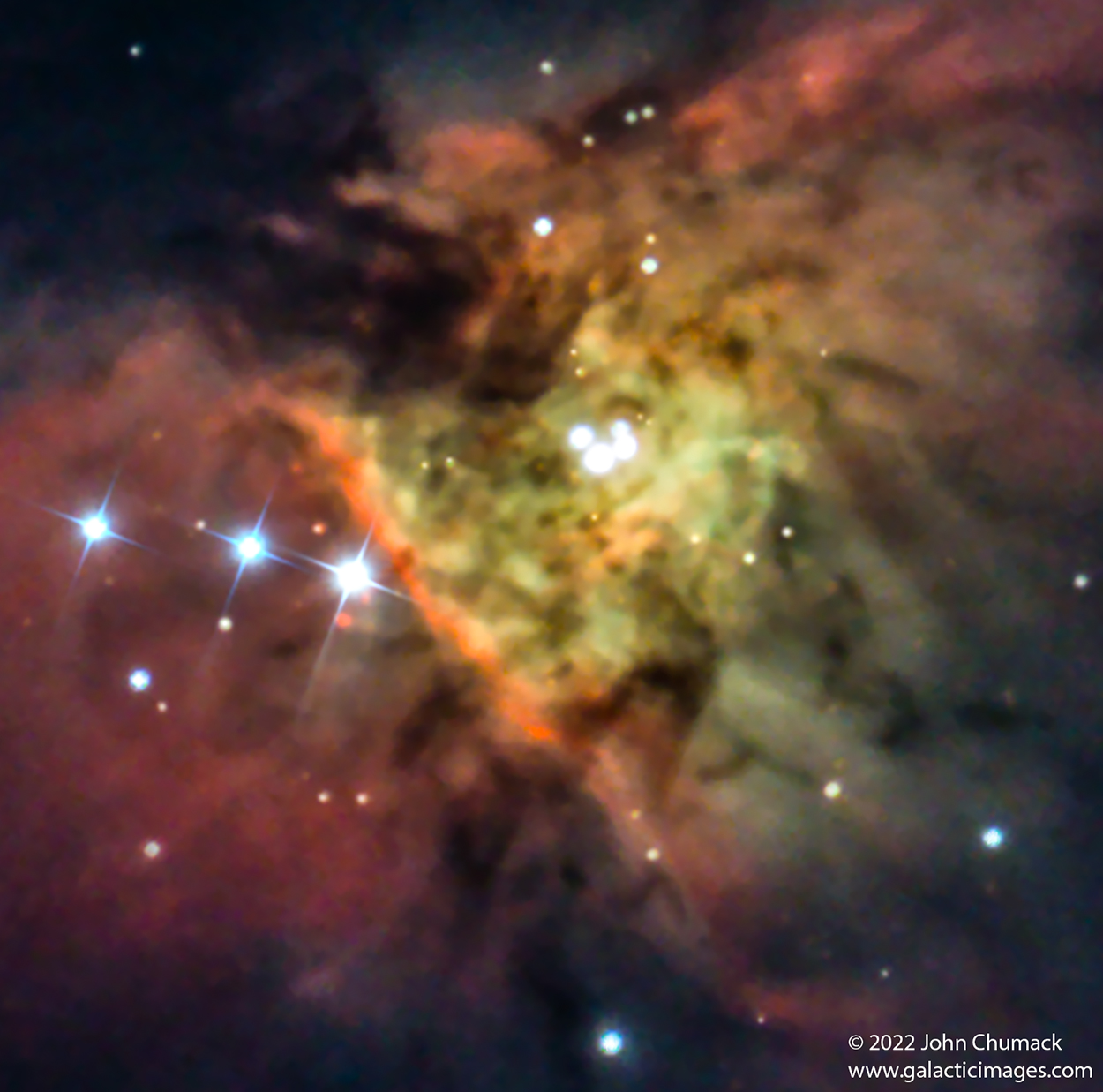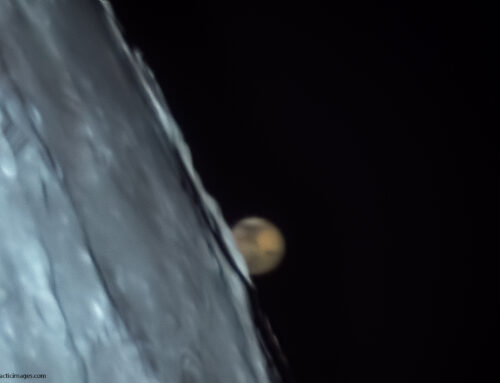Theta 1 Orionis – The Trapezium Open Star Cluster, also known as the clutch of eggs inside the center of M42 the Great Orion Nebula Complex.
Shining at 5.1 magnitude, the Trapezium stars are very easy to see visually through a small telescope or Binoculars on a tripod,
but Photographically this region often gets over exposed while trying to capture the fainter outer regions of the Nebula.
I used “Lucky Imaging” Method 30 x (short 2 second exposures) to capture this to bring out the details in the dust/Bok Globules in the Core of the Trapezium region.
Theta 1 Orionis C1, the brightest star in the core is responsible for generating most of the ultraviolet light that is slowly ionizing and perhaps photo-evaporating the
Orion Nebula. This UV light is also the primary cause of the glow that illuminates the Orion Nebula.
The Trapezium star C1 emits a powerful stellar wind that is a hundred thousand times stronger than the Sun’s, and the outpouring gas moves at 1,000 km\s.
The Dark brown dusty shapes of are known as Bok Globules, Bok globules are isolated and relatively small dark nebulae, containing dense cosmic dust and gas
from which star formation may take place.
Bok globules are found within H II regions, and typically have a mass of about 2 to 50 solar masses contained within a region about a light year or so across.
M42 & M43 The Great Orion Nebula is a massive Star formation region there are estimates of over 50,000 stars being formed in the Nebula.
Theta 1 Orionis is located at 1500 light years away in the Constellation Orion, inside the Orion Nebula.
Celestron 6″ F5 Newtonian Scope, Bisque MYT Mount, ZWO224MC Uncooled Cmos Camera, 30 x 2 second exposures Stacked(60 second total integration time), ASI Air WiFi- to IPAD
Using DSS, Nebulosity, Pixinsight, Adobe Raw CS 2022. Captured from my backyard observatory in Dayton, Ohio on 02-20-2022.
Best Regards,
John Chumack
wwww.galacticimages.com







